Stunning Jukseoru Pavilion
in Samcheok City
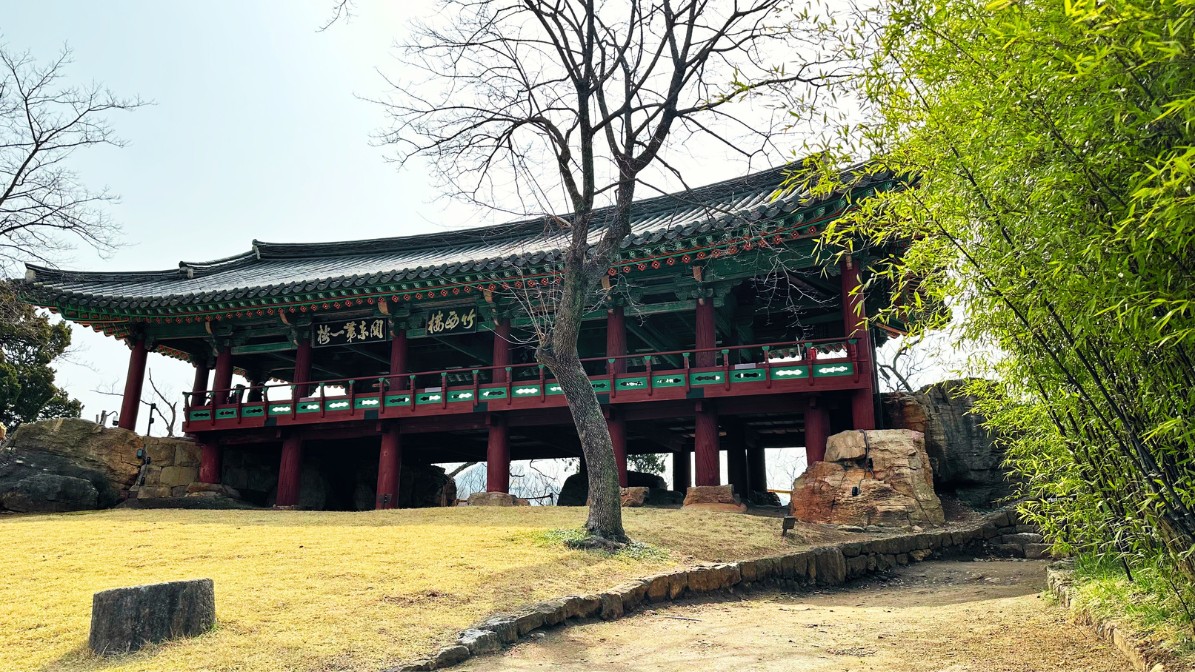 Jukseoru Pavilion in Samcheok City, Gangwon Province
Jukseoru Pavilion in Samcheok City, Gangwon ProvinceJukseoru Pavilion in Samcheok City
Have you ever heard of Jukseoru Pavilion in Samcheok City, Gangwon Province?
It is a hidden gem located in Samcheok City, South Korea. I had the opportunity to explore this fantastic place (March 2024), which completely surpassed my expectations.
Initially, I thought the place would be small and only feature the traditional Korean structure, but it turned out to be much more interesting than I had anticipated.
Therefore, I decided to share my experience with you through this article, hoping to inspire you to visit this fascinating location.
Visitors have praised the pavilion's beautiful architecture. It is situated in a park by the cliff, and visitors must remove their shoes before entering the wooden floor inside the structure.
In this article, I will share my impressions of the Jukseoru Pavilion, some photos I took, and additional information I found online.
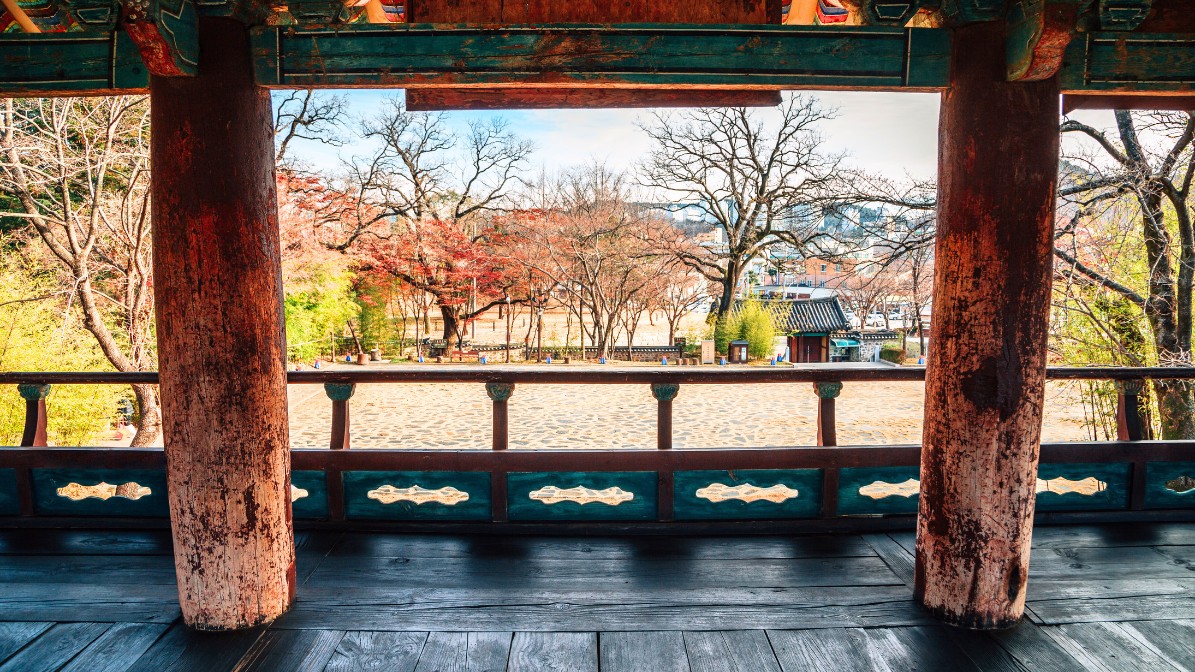 Jukseoru Pavilion in Samcheok City, Gangwon Province
Jukseoru Pavilion in Samcheok City, Gangwon Province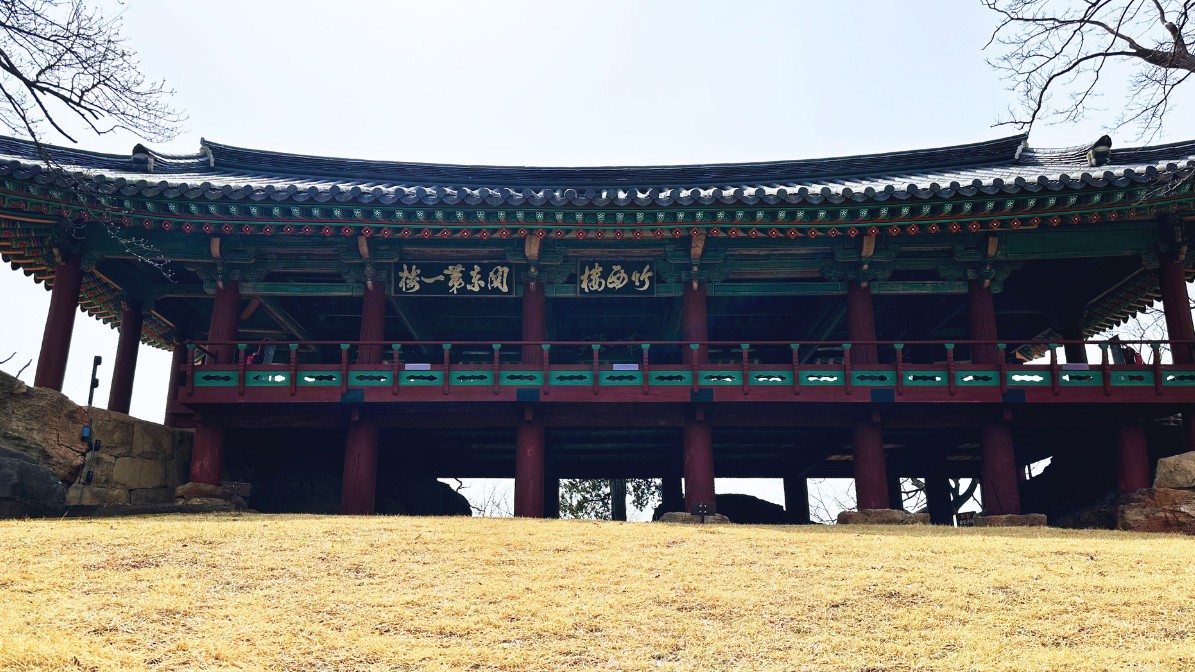 Frontview
Frontview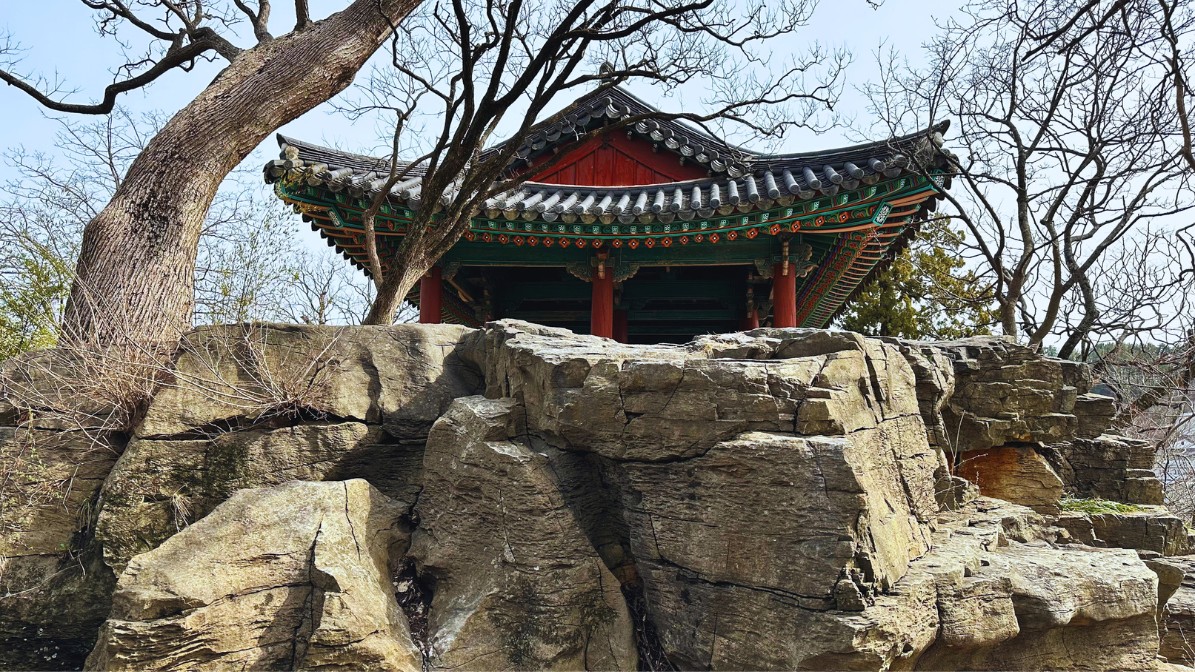 Side view
Side view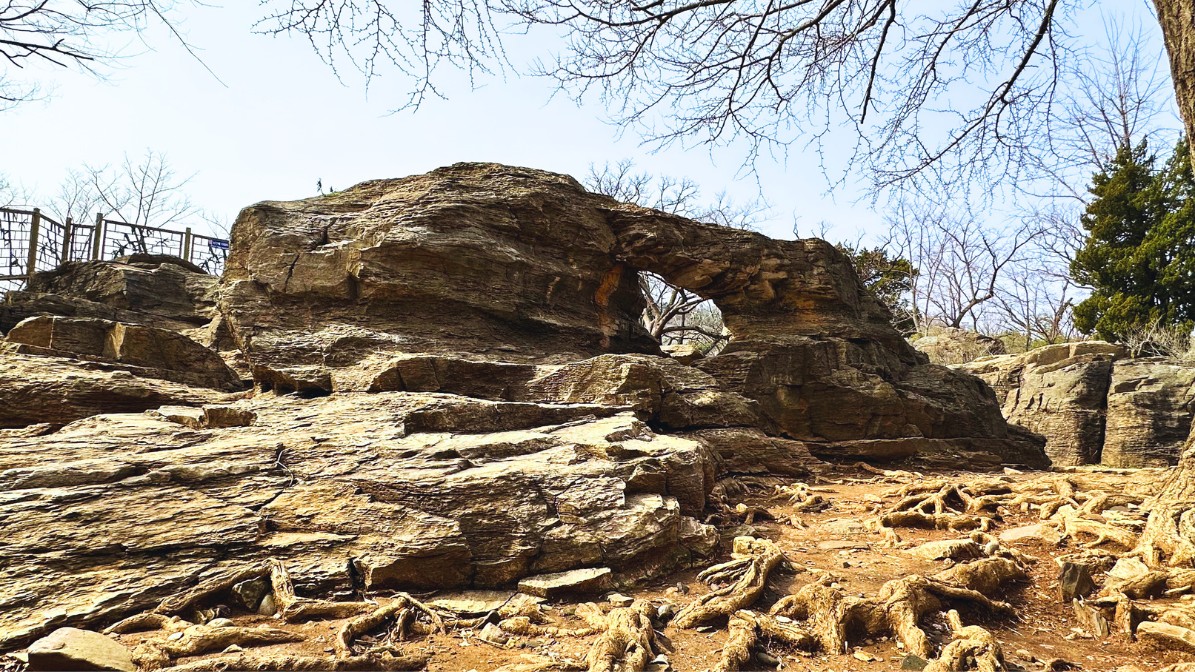 Yongmun Rock
Yongmun Rock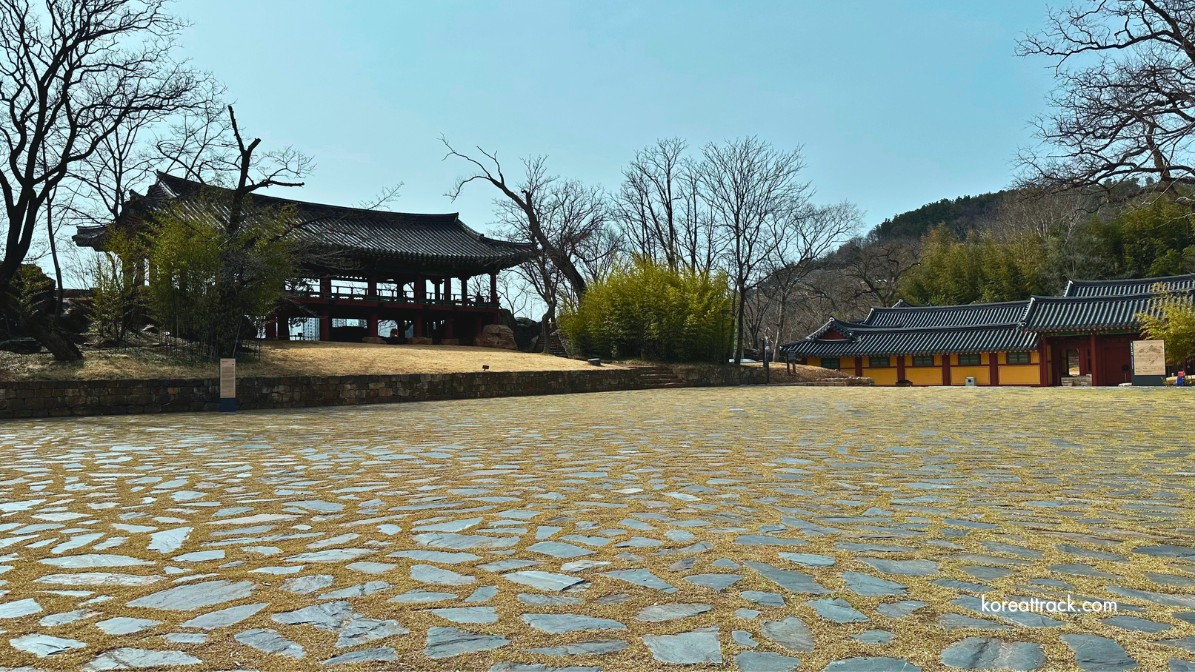 Front ground
Front groundIf you are in the area, consider visiting the Jukseoru Pavilion to appreciate its historical significance and enjoy the riverside view.
So, join me as we explore the beauty and serenity of one of the eight famous spots in Eastern Korea and treasure number 213 in Korea—the Jukseoru Pavilion.
Contact & Visiting Time Info...
Jukseoru Pavilion is located at 9-3, Seongnae-dong, Samcheok. It is open every day from 9:00 AM to 6:00 PM. You can reach them at 033-570-3670.
Introduction
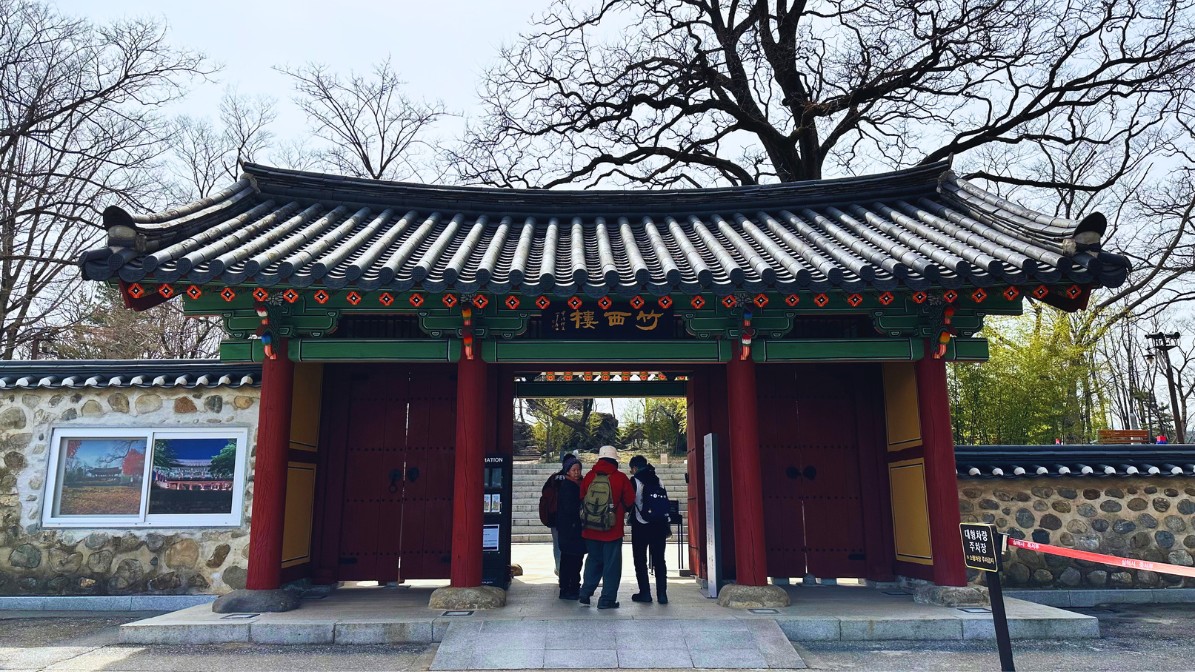 Jukseoru Pavilion in Samcheok City, Gangwon Province - Entrance Gate
Jukseoru Pavilion in Samcheok City, Gangwon Province - Entrance GateJukseoru (竹西樓) is a stunning pavilion in the picturesque city of Samcheok in Gangwon Special Autonomous Province, South Korea.
It is considered one of the Eight Scenic Views of Gwandong and has been renowned for its exceptional beauty since ancient times.
The pavilion is perched on a cliff overlooking the Osipcheon River (五十川), which flows gracefully in front of it.
The landscape formed by the Jukseoru and the Osecheon is a sight to behold, and it is no wonder that this place has been a muse for poets, painters, and writers for centuries.
Jukseoru Pavilion in Samcheok City was designated as Treasure No. 213 in 1963, and in 2007, it was designated as Scenic Spot No. 28 under the name "Samcheok Jukseoru and Osipcheon."
On December 28, 2023, along with Miryang Yeongnamnu, it was designated a National Treasure, a testament to its cultural and historical significance in South Korea.
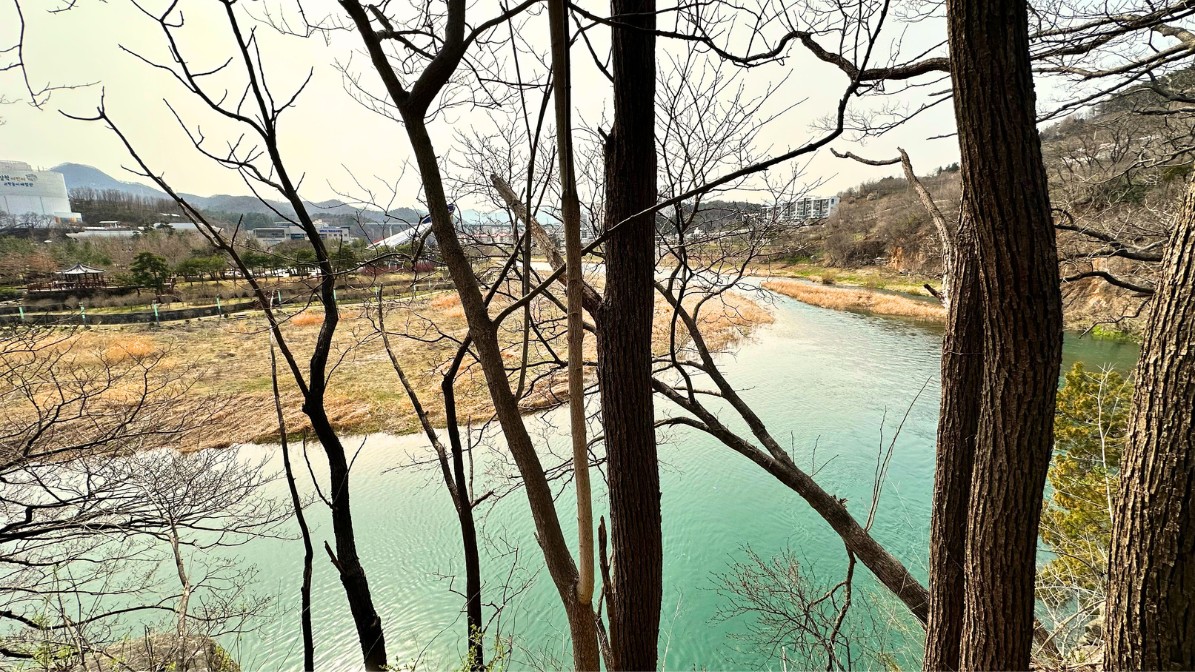 A view of Osipcheon River from Jukseoru Pavilion in Samcheok City, Gangwon Province
A view of Osipcheon River from Jukseoru Pavilion in Samcheok City, Gangwon ProvinceThe exact date of construction is still being determined, but according to Dong Ang Geo Sa Jip by Yi Seung-hyu from the late Goryeo period, it is presumed to have been built before 1266 when Yi Seung-hyu composed poems here.
It was later repaired by Kim Hyo-son, the governor of Samcheokbu, in 1403 during the reign of King Taejong of Joseon. It is said that the pavilion was named Jukseoru after the nearby Jukjangsa temple and the house of a famous woman named Jukjuk Seonnyeo.
Jukseoru is built using natural rock as its foundation, with pillars erected at varying heights to blend seamlessly with the surrounding landscape, which is considered an integral part of nature.
It is a remarkable example of the traditional Korean architectural style.
Even after centuries, the pavilion stands tall and is a testament to the skill of its builders.
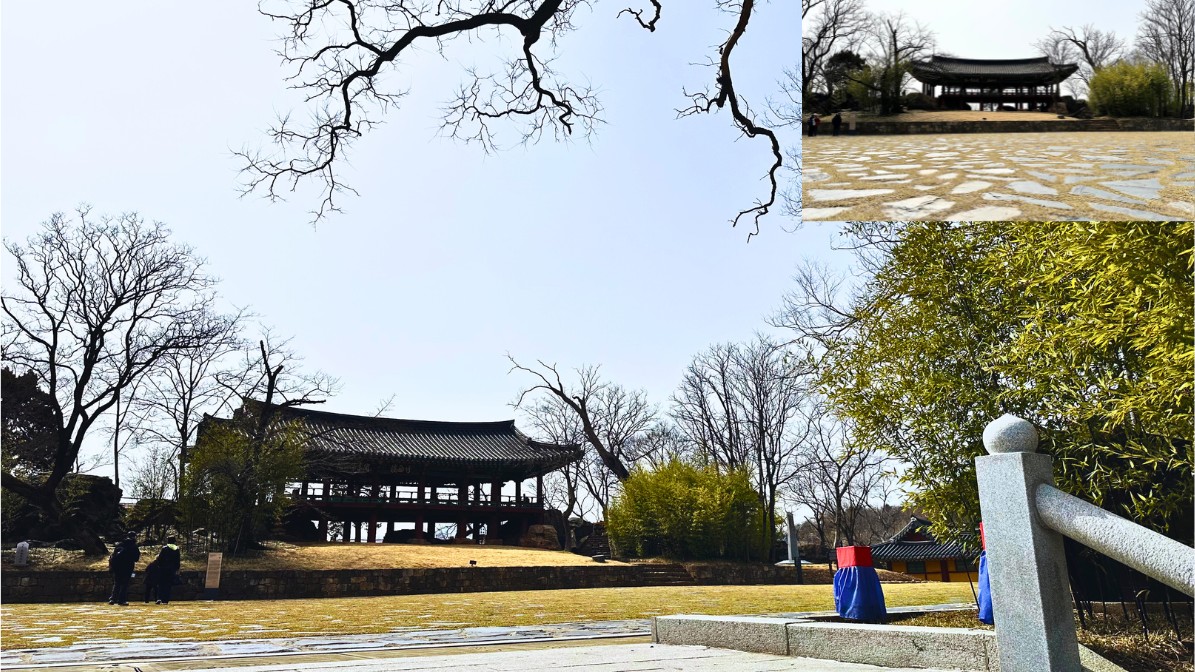 Jukseoru Pavilion in Samcheok City, Gangwon Province
Jukseoru Pavilion in Samcheok City, Gangwon ProvinceFor those interested in history, notable figures from the Goryeo and Joseon periods, such as Song Gang-jeong and Heo Mok, visited here to display their literary prowess or political acumen.
During his tenure as governor, Heo Mok left behind plaques and inscriptions, some displayed throughout the pavilion, adding to its historical significance.
In short, Jukseoru is a must-visit attraction for those who appreciate art, history, nature, and architecture. The pavilion's timeless beauty and rich history will leave a lasting impression on anyone visiting it.
Establishment in the 12th Century
Jukseoru Pavilion in Samcheok City is a magnificent structure that has been the subject of numerous works of art and literature throughout the centuries.
The pavilion is believed to have been established by the 12th Century and was initially known as "Seoru" before it was called "Jukseoru" in the late 14th Century.
Governor Kim Hyo-son of Samcheokbu reconstructed it in 1403, and it underwent several renovations and expansions since the Goryeo period, with its original form being well preserved since the late Joseon period.
The pavilion has 22 pillars, 13 erected directly on natural rock, and natural stone foundations support the rest.
The southern expansion of the pavilion was done without laying flooring, utilizing smoothed stones only at the entrance, maintaining its natural ambiance.
The pavilion's interior lacks walls and windows, featuring exposed ceiling beams and unique well-shaped ceiling finishes.
The flooring consists of short planks fitted into wooden frames to prevent falls, with railings installed for safety.
Jukseoru is adorned with many inscriptions, including poems by scholars such as Yi I (Yulgok), and artists like Gim Hong-do and Gang Se-hwang have created numerous paintings depicting the scenery of Jukseoru.
The pavilion's breathtaking landscape and the surrounding Osipcheon further enhance its status as a national treasure.
The exact date of its construction and the identity of its builder are unknown.
However, according to Dong Ang Geo Sa Jip, Yi Seung-hyu composed poems here in 1266, suggesting it was built before that year. It was later repaired by Kim Hyo-son in 1403.
"Noo (樓)" refers to a pavilion built with an elevated floor, and "Jukseoru" got its name from the nearby Jukjangsa temple and the house of Jukjuk Seonnyeo.
Initially, the pavilion had seven frontal and two side bays, but it is speculated to have had five frontal bays.
Its roof, resembling the character "八" when viewed from the side, suggests it may have had a different roof structure originally.
The decorative structure supporting the roof is unique, and the pillars are directly erected on natural rock, another distinctive feature.
Yongmun Rock ('dragon's gate' rock)
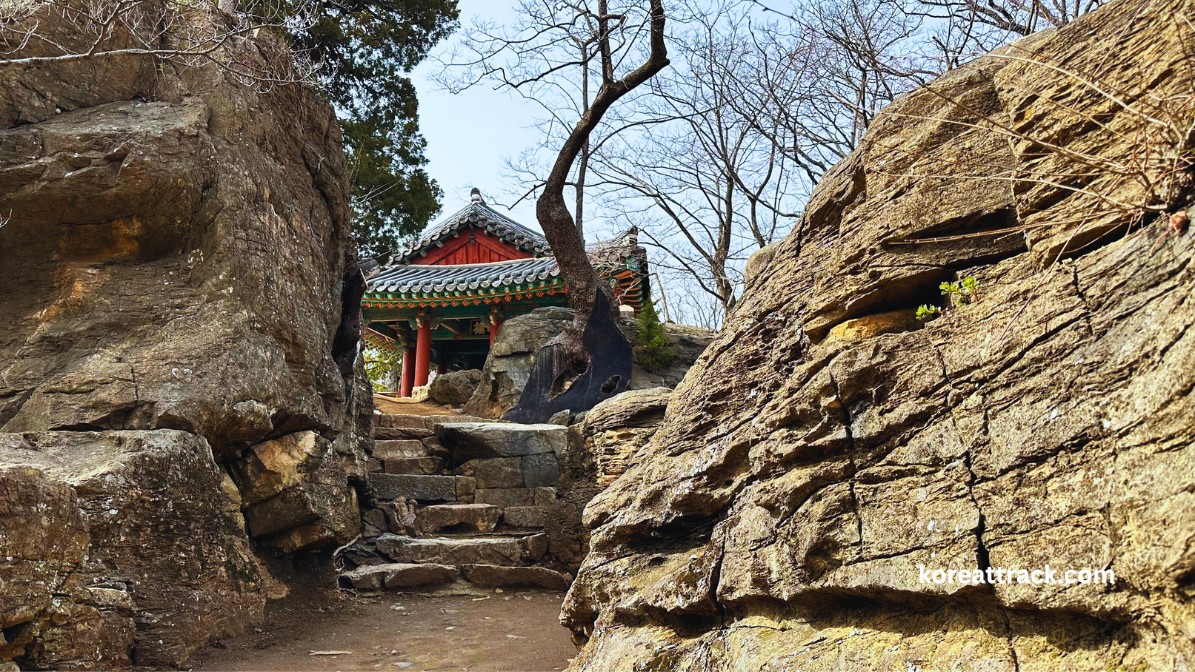 Jukseoru Pavilion: Yongmun (Dragon's Gate) Rock
Jukseoru Pavilion: Yongmun (Dragon's Gate) Rock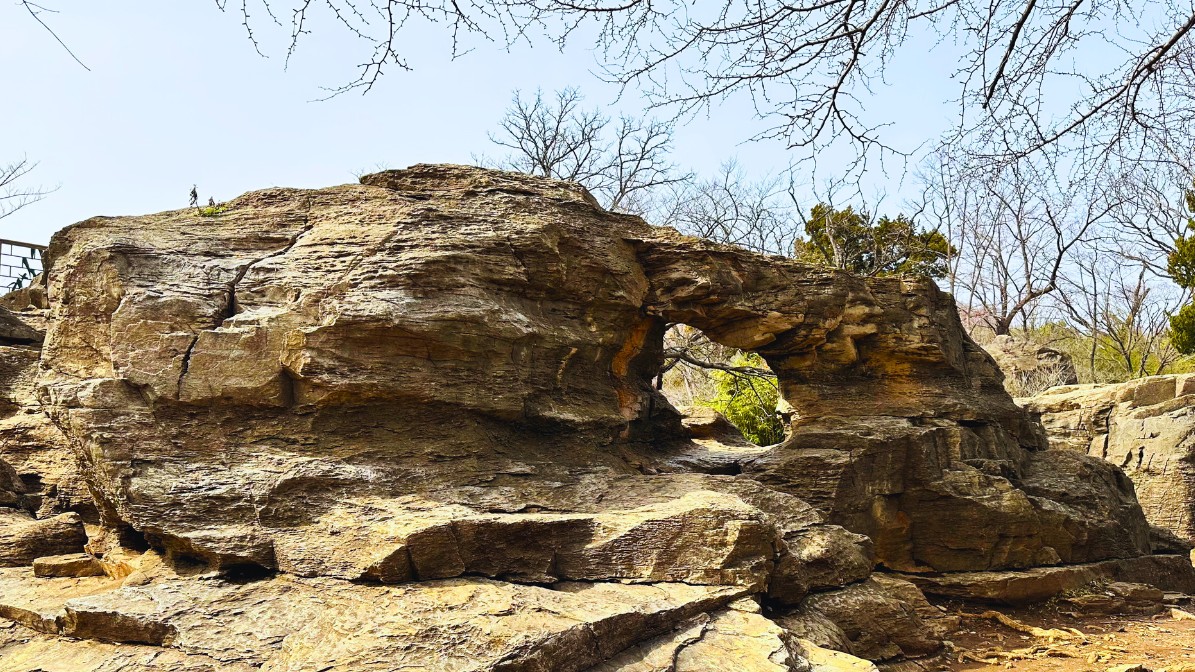 Yongmun (Dragon's Gate) Rock
Yongmun (Dragon's Gate) Rock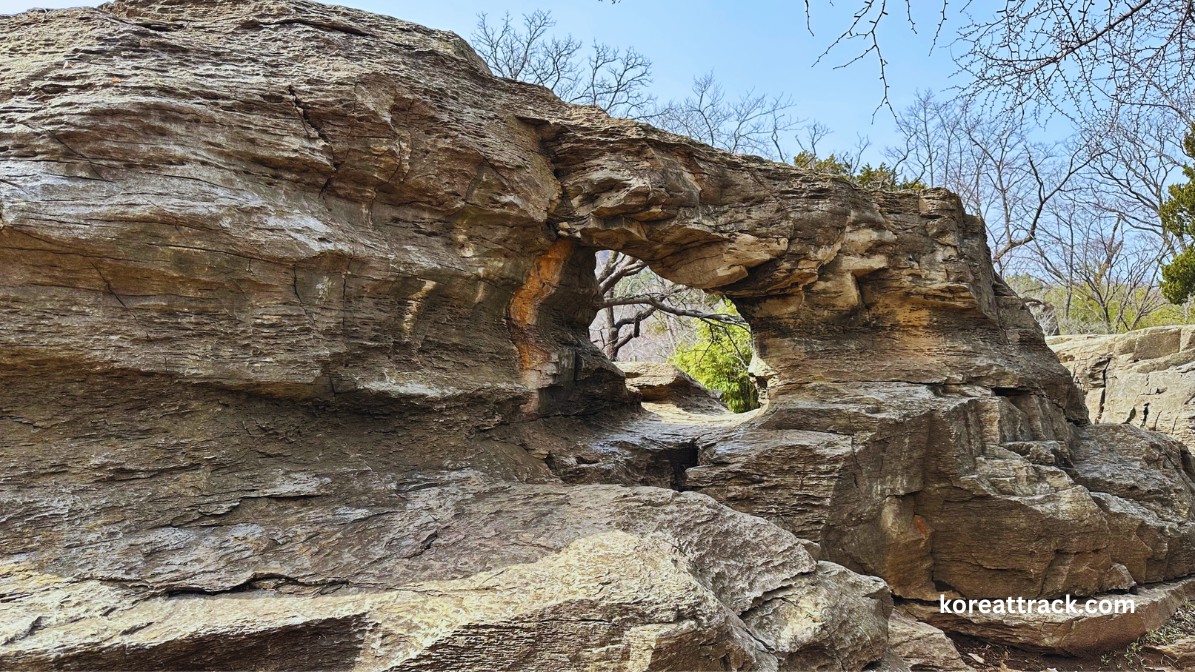 Yongmun (Dragon's Gate) Rock
Yongmun (Dragon's Gate) RockLegend has it that the 30th king of the Silla Dynasty, King Munmu, transformed into a dragon after his death to protect the country in the East Sea.
One day, the dragon leaped into a river called Osipcheon, creating a stunning cliff under Jukseoru. As the dragon plunged into the river, it pierced a rock beside Jukseoru, now known as Yongmun Rock.
Ever since, the rock has come to represent beauty, longevity, and good fortune. Many people visit Yongmun Rock to pray and make their wishes.
 Jukseoru Pavilion: Yongmun (Dragon's Gate) Rock
Jukseoru Pavilion: Yongmun (Dragon's Gate) RockJukseoru holds significant historical and architectural value due to its well-documented construction history, architectural evolution, and numerous literary and artistic contributions over the centuries.
Its location atop cliffs overlooking the lush forests of Mt. Dutasan and the Osipcheon flowing through Samcheok has long made it one of the Eight Scenic Views of Gwandong.
"Samcheok Jukseoru and Osipcheon" is one of the Eight Scenic Views of Gwandong, as described in Song Gang-jeong's "Gwandong Byeol-gok," representing the breathtaking scenery along the Osipheon, renowned as the most scenic spot where it flows through Samcheok.
Samcheok-dohobu Government Office Site
Historic Site
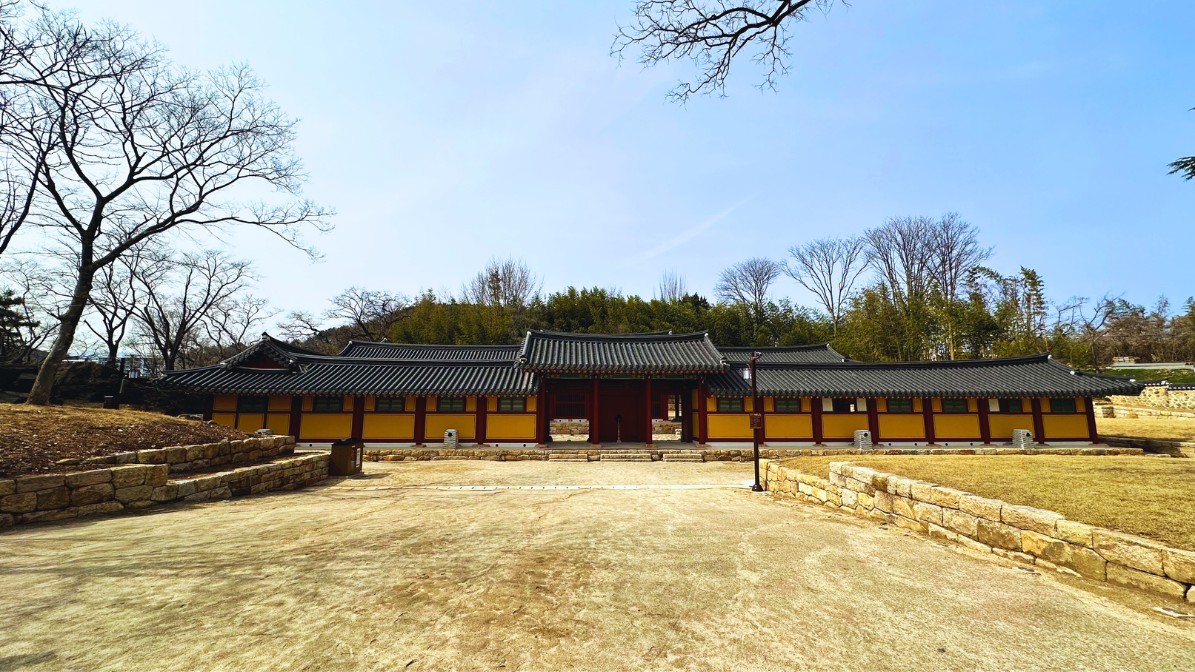 Jukseoru Pavilion in Samcheok - Dohobu Government Office
Jukseoru Pavilion in Samcheok - Dohobu Government OfficeThis is the former location of the Samcheok-dohobu Government Office. The Samcheok area has been known by its current name since 757, during the Unified Silla period (676-935).
In 1413, during the Joseon period (1392-1910), it was granted the status of a regional military command (dohobu), an administrative unit established in an area of great strategic importance.
As a governing institution, the Samcheok-dohobu Government Office oversaw the administration of the area until the late 19th Century. In 1895, the area became a county; in 1986, it became a city.
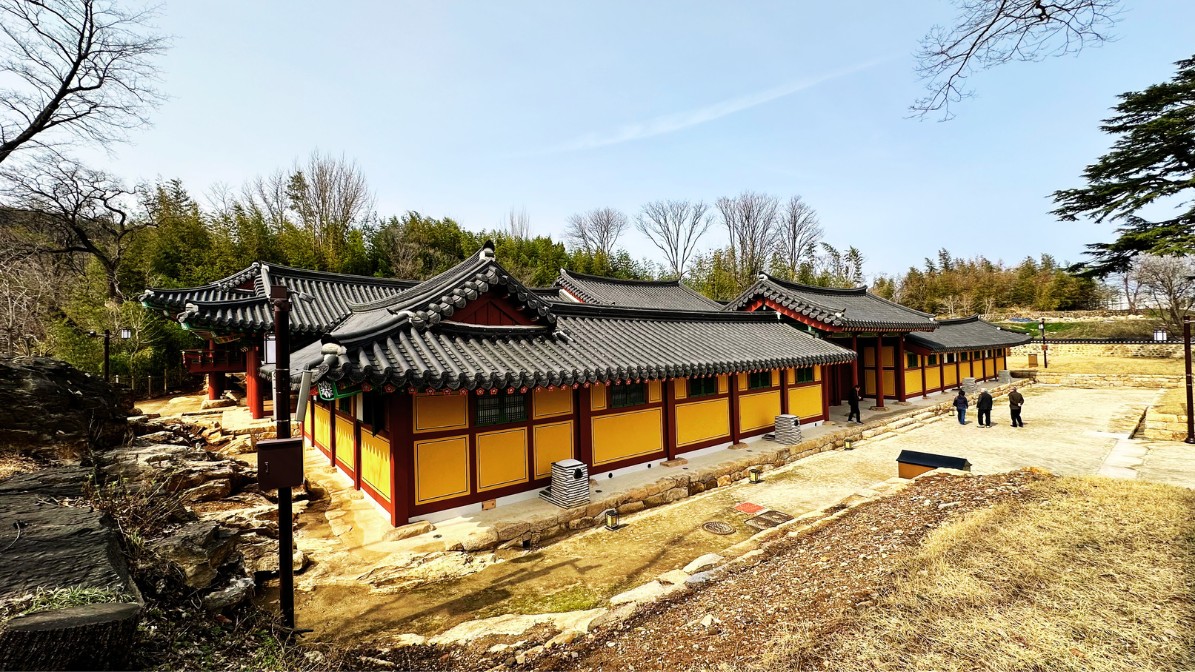 Jukseoru Pavilion in Samcheok - Dohobu Government Office, Jinjugwan Guesthouse
Jukseoru Pavilion in Samcheok - Dohobu Government Office, Jinjugwan Guesthouse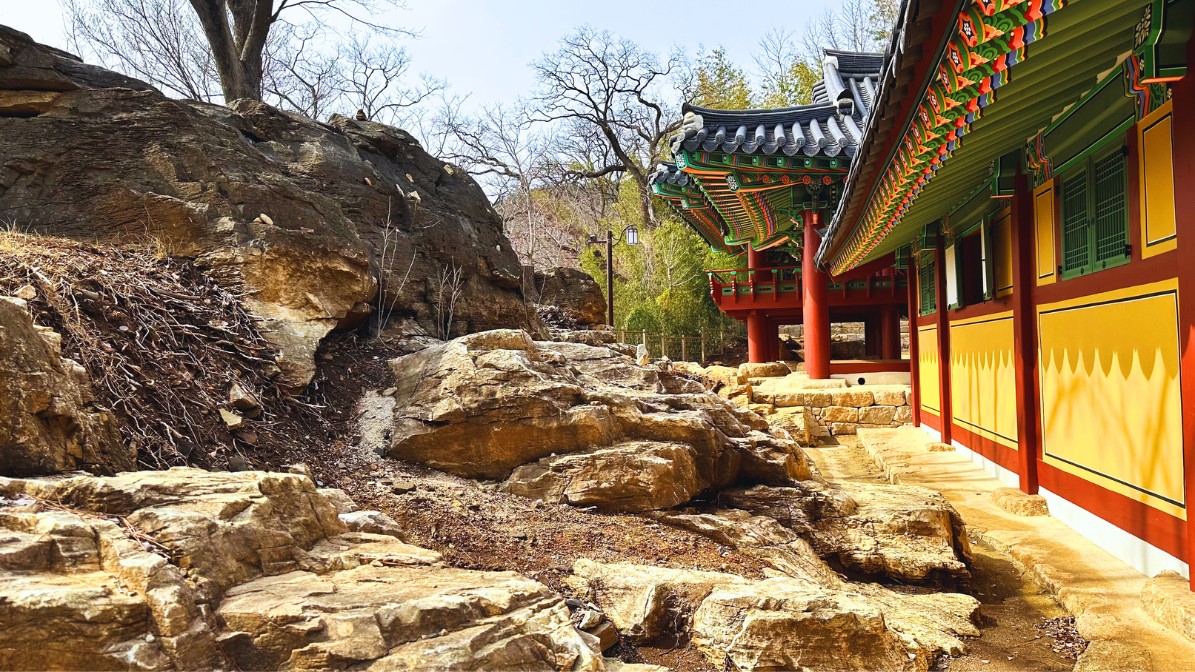
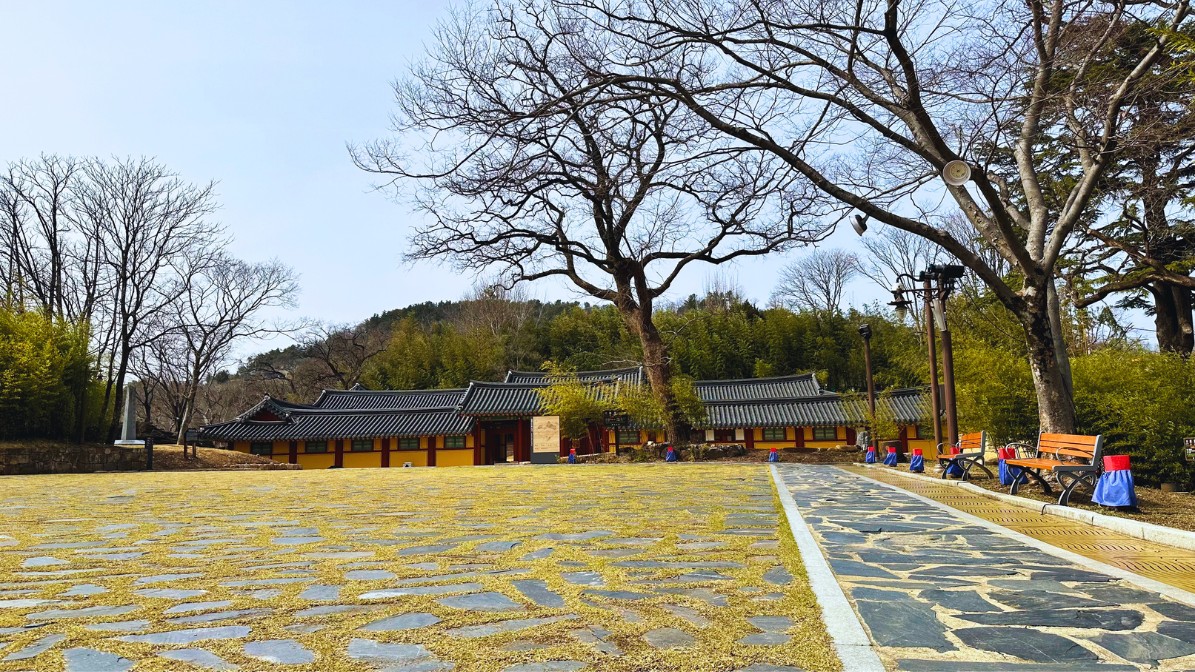

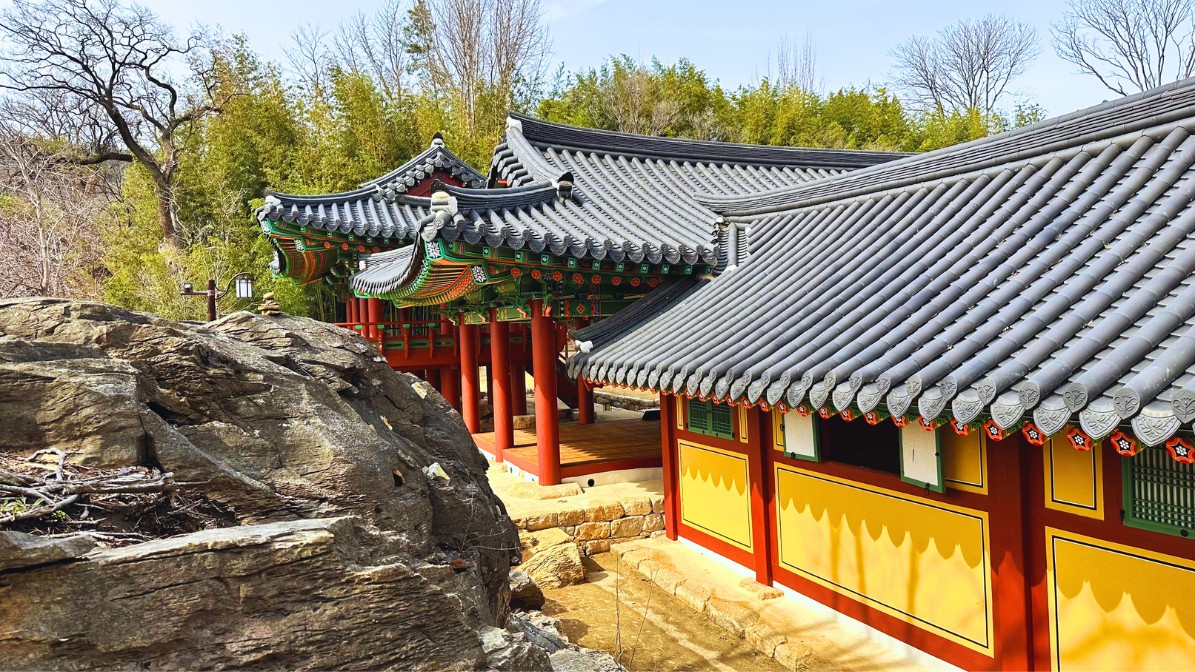
During the Japanese colonial period (1910-1945), the original buildings of the government office were all lost.
Excavations of the site were conducted from 2010 to 2016, which confirmed the remains of the walls and the southern gate of Samcheokeupseong Walled Town, as well as the building sites of the government office, which include a magistrate's office, a magistrate's residence, and a guesthouse.
In 2021, the site was designated as a Historic Site in recognition of its historical and academic value as the Samcheok area's representative Joseon-period government office.
That same year, a project was launched to reconstruct the government offices based on archaeological findings and historical documents. Jinjugwan Guesthouse and Eungbyeokheon Pavilion were completed in 2022.
So, whenever you are in the Samcheok City area, I invite you to explore the Jukseoru Pavilion and Samcheok-dohobu Government Office Site. They provide living structural proof of what the old Samcheok area looked like in the past.
Enjoy your travels!
- Home
- Gangwondo Attractions
- Samcheok Travel Attractions
- Jukseoru Pavilion in Samcheok
Get Exciting Activities
Book one of our exciting activities today to experience the thrill of a lifetime! Take advantage of this opportunity and secure your spot in advance.
Hotel Map Guide
Find your affordable, accessible, and comfortable hotel in Seoul at Agoda.Com. See the hotel map below...
Hotel Booking Guide
Find affordable and amazing hotels on Agoda.com using the search box below. Book now to enjoy great discounts and save!
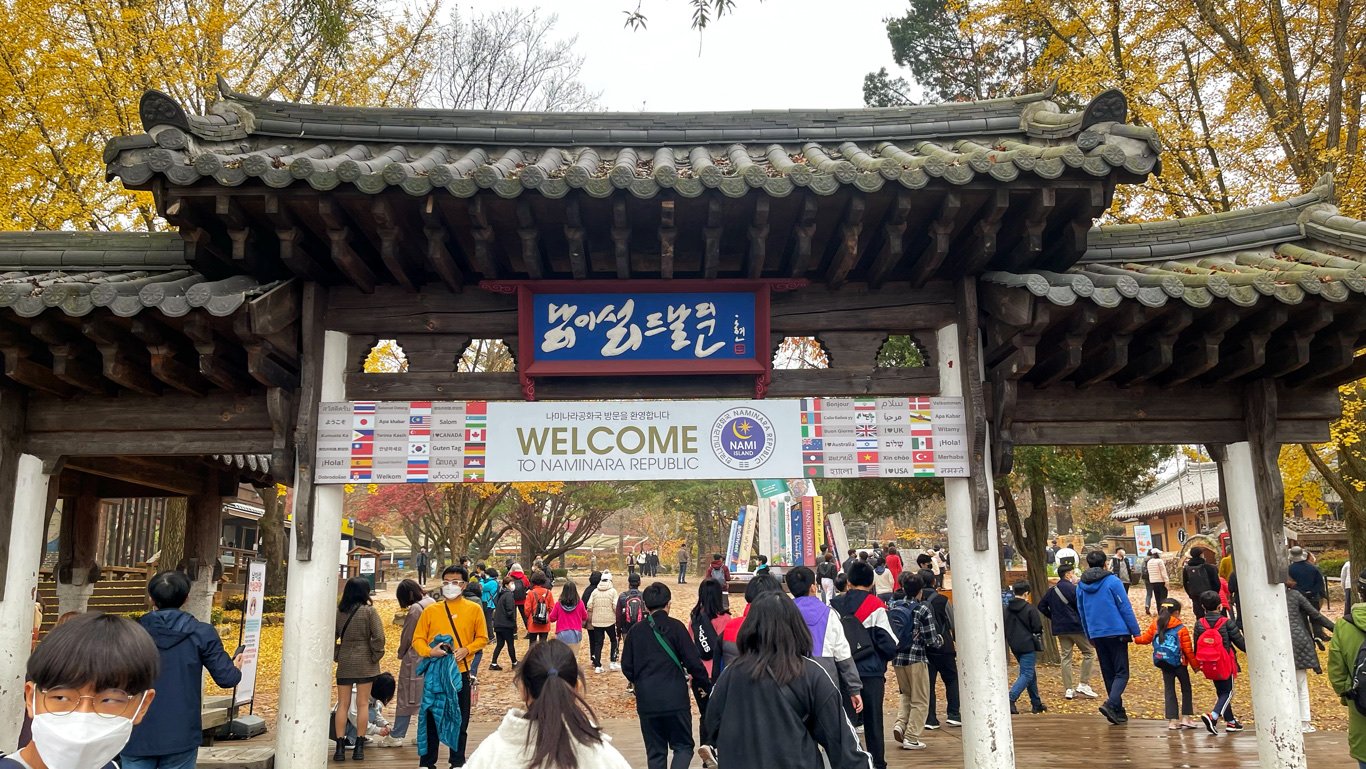
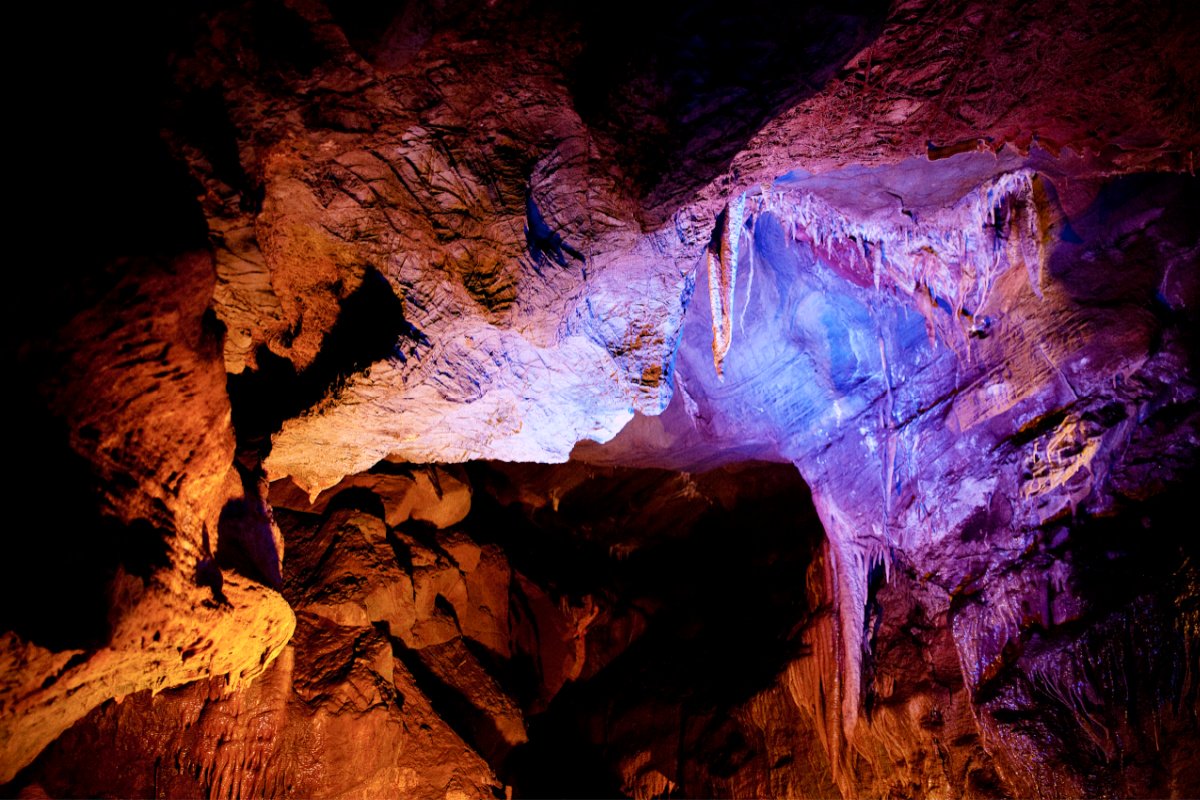
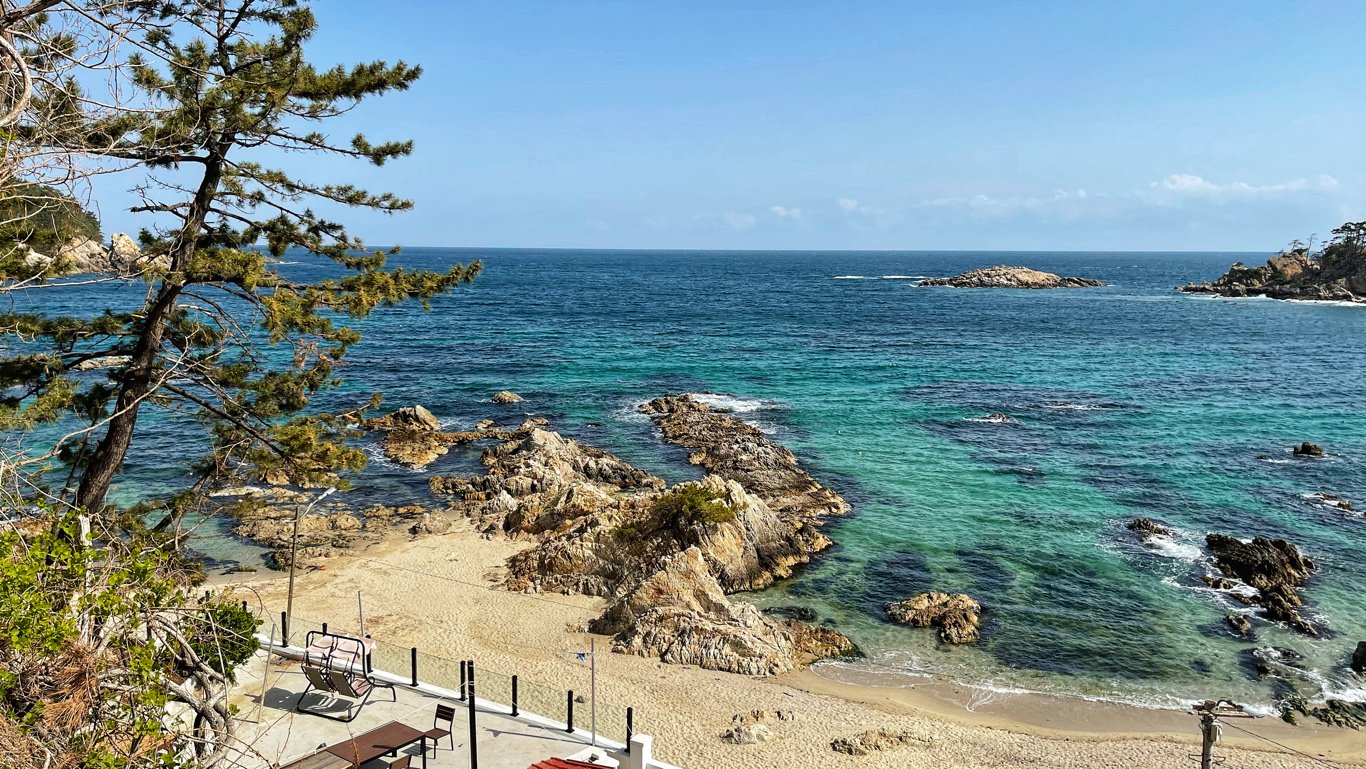




New! Comments
What do you think about this page? Leave me a comment in the box below.